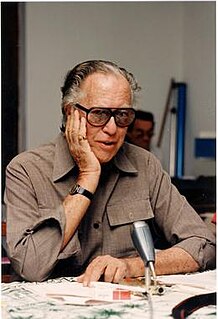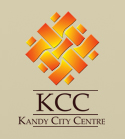See also
| History | |||||
|---|---|---|---|---|---|
| Influences | |||||
| Styles |
| ||||
| Rooms and spaces | |||||
| Furnishings | |||||
| Elements | |||||
| Notable cities | |||||
| Theory and analysis | |||||
| Lists | |||||
The following is a list of architects with a strong connection to the country of Sri Lanka (i.e., born in Sri Lanka, located in Sri Lanka or known primarily for their work in Sri Lanka).

Minnette de Silva was an internationally recognized architect, considered the pioneer of the modern architectural style in Sri Lanka. De Silva was a fellow of the Sri Lanka Institute of Architects.

The Baroque Revival, also known as Neo-Baroque, was an architectural style of the late 19th century. The term is used to describe architecture and architectural sculptures which display important aspects of Baroque style, but are not of the original Baroque period. Elements of the Baroque architectural tradition were an essential part of the curriculum of the École des Beaux-Arts in Paris, the pre-eminent school of architecture in the second half of the 19th century, and are integral to the Beaux-Arts architecture it engendered both in France and abroad. An ebullient sense of European imperialism encouraged an official architecture to reflect it in Britain and France, and in Germany and Italy the Baroque Revival expressed pride in the new power of the unified state.
Nayyar Ali Dada is a Pakistani architect.

Sri Vikrama Rajasinha was the last of four Kings, to rule the last Sinhalese monarchy of the Kingdom of Kandy in Sri Lanka. The Nayak Kings were of Telugu origin who practiced Shaivite Hinduism and were patrons of Theravada Buddhism. The Nayak rulers played a huge role in reviving Buddhism in the island. They spoke Tamil, which was also used as the court language in Kandy alongside Sinhalese.

Kalutara or Kalutota is a major city in Kalutara District, Western Province, Sri Lanka. It is also the administrative capital of Kalutara District. It is located approximately 43 km (27 mi) south of the capital Colombo.The city holds a unique position for one of the four major rivers in Sri Lanka which joins the sea at the center of the city.The area is well known to produce the Mangosteens, a fruit introduced from Malaysia in the 19th century.

Deshamanya Geoffrey Manning Bawa, FRIBA was a Sri Lankan architect. He was among the most influential Asian architects of his generation. He is the principal force behind what is today known globally as "tropical modernism".
"It's no exaggeration to say that architect Geoffrey Bawa transformed the look of South-East Asia. And yet what he did is so subtle that we almost take it for granted today. In short, Bawa-tailored modern buildings to a specific environment. It hardly seems revolutionary and yet no one else had done anything like it in the region."

The following outline is provided as an overview of and topical guide to Sri Lanka:

Nissanka Malla, also known as Kirti Nissanka and Kalinga Lokesvara was a king of Sri Lanka who ruled the country from 1187 to 1196. He is known for his architectural constructions such as the Nissanka Lata Mandapaya, Hatadage and Rankot Vihara, as well as for the refurbishment of old temples and irrigation tanks.

The architecture of Sri Lanka displays a rich variety of architectural forms and styles. Buddhism has had a significant influence on Sri Lankan architecture, since it was introduced to the island in the 3rd Century BCE.
Lal Dharmapriya Gamage was a Sri Lankan politician and the former Minister Assisting Foreign Affairs.

Kandy City Centre is a ten-storey commercial and retail complex which is located in Kandy, Sri Lanka near the Temple of Tooth Relic. Construction of the centre was started in 1993 and it was opened in 2005. Under the management of Thusitha Wijayasena and the ownership of the PFIK, the complex is one of the most successful projects in Sri Lanka.

Kerry Hill AO was an Australian architect who specialised in hotel design in tropical Asia.

Justin Samarasekera was a Sri Lankan architect. He is considered to be one of the founding fathers of the architectural profession in Sri Lanka and a pioneer of architectural education in the country.
Dona Enfreeda Rangani Chitra Weddikkara (1947), known as Chitra Weddikkara, is a Sri Lankan Professor of Building Economics, a Chartered Architect, a Chartered Quantity Surveyor, an external examiner, an administrator, a frequent speaker at construction related professional venues.
Commonwealth Association of Architects (CAA), formed in 1965, is an organisation for national and regional institutes representing architects in Commonwealth countries. As such, under the Commonwealth family, the association validates courses in architecture and convenes international boards to educational institutions to assess course components against set criteria. Its current membership list is 34 nations. Sir Robert Matthew CBE served as the first President from 1965 to 1969. Vince Cassar is the present president of the organization.
Muthiah Sthapati is an Indian sculptor, architect and builder of Hindu temple architecture. He is known for the design and construction of several temples in the UK and US, including the Hindu Temple of Minnesota. He is the creator of the 67.5-foot Buddha statue at Rambadagalla Vidyasagara Temple, in Sri Lanka, reported to be world's largest Buddha statue in the seated (samadhi) position. The Government of India awarded him the fourth highest civilian award of Padma Shri in 1992.

Seema Malaka is a Buddhist temple in Colombo, Sri Lanka. The temple is mainly used for meditation and rest, rather than for worship. Situated in the Beira Lake, the temple was originally constructed in the late 19th century. Seema Malaka is a part of the Gangaramaya Temple and is situated few hundred meters to its east.
The following is an alphabetical list of topics related to Sri Lanka.